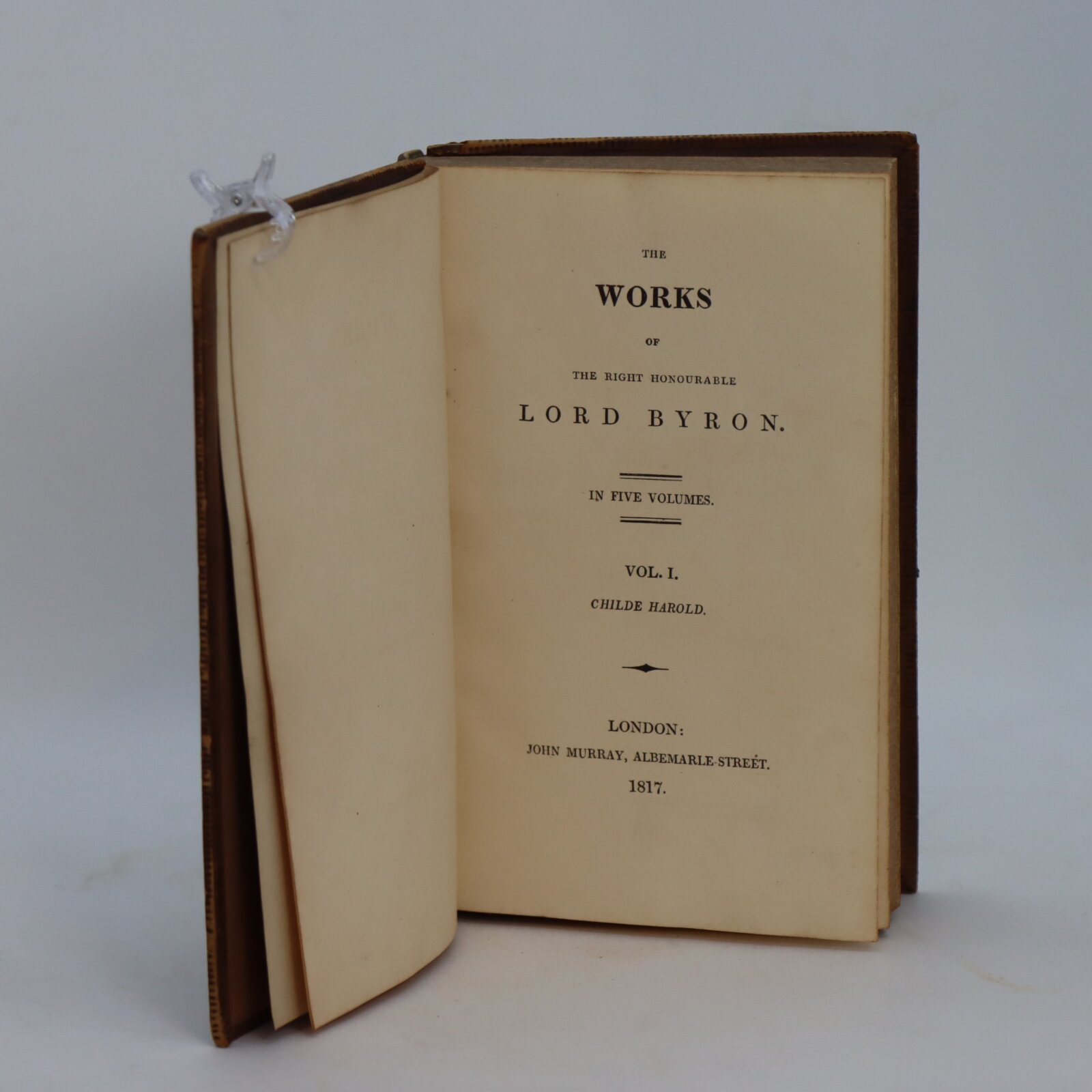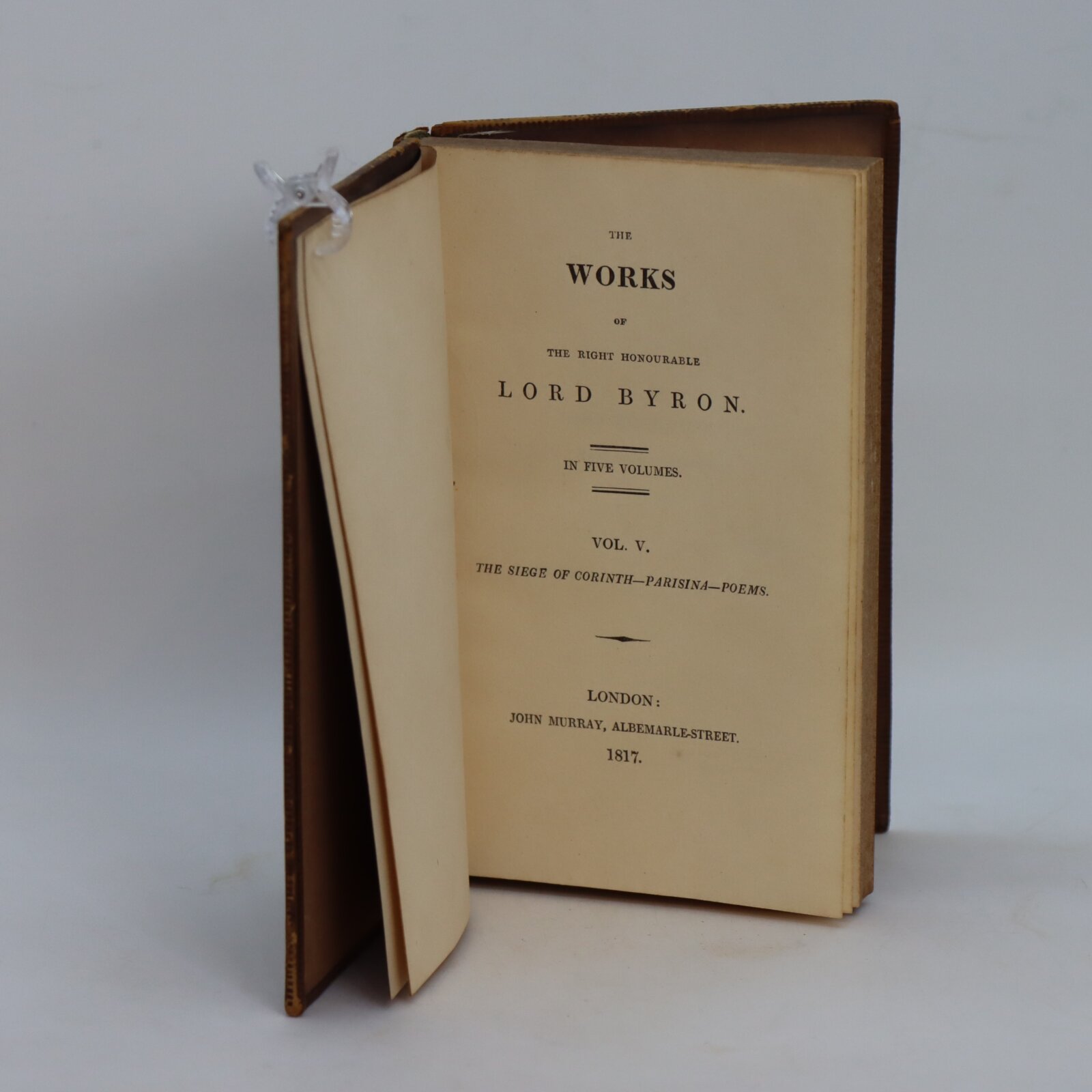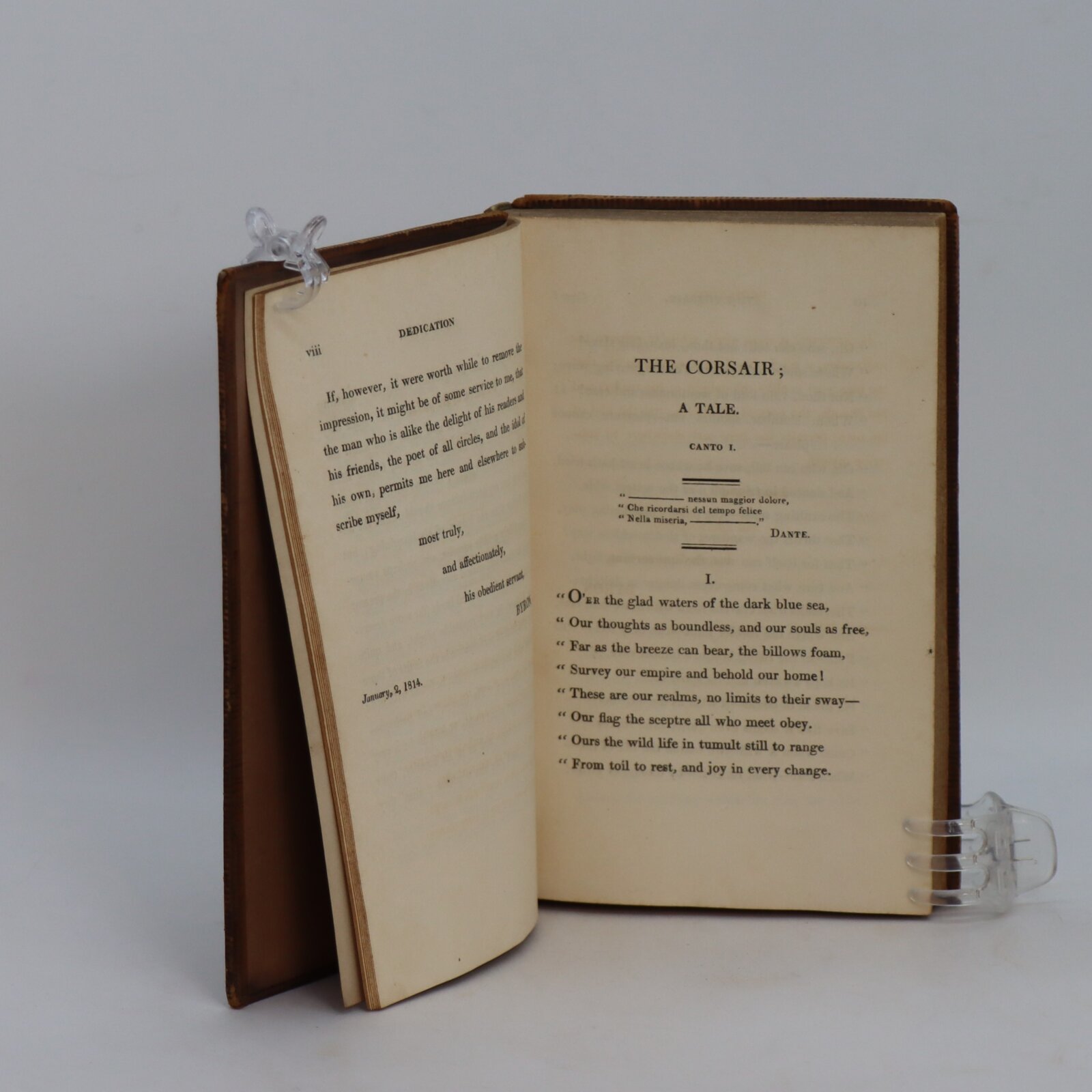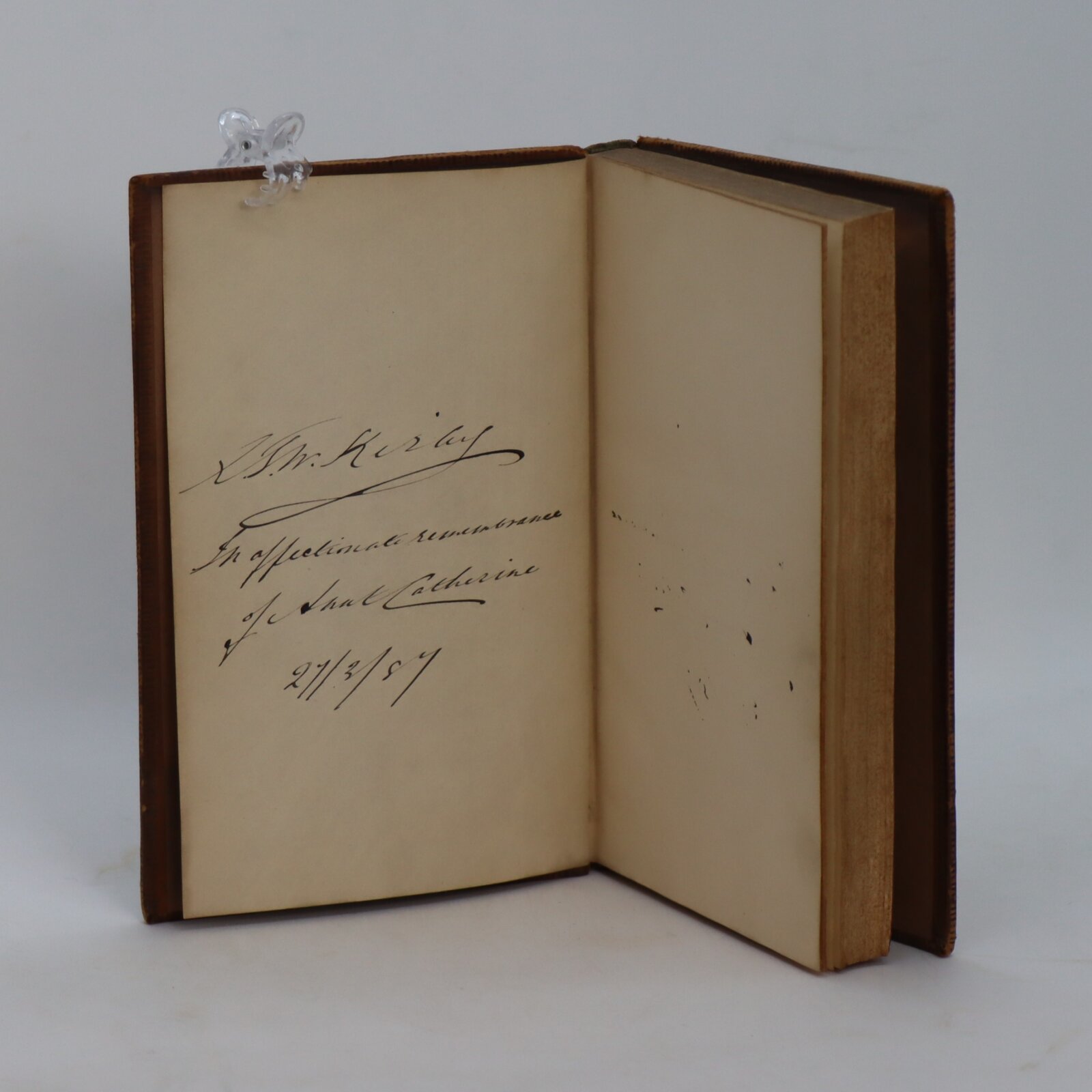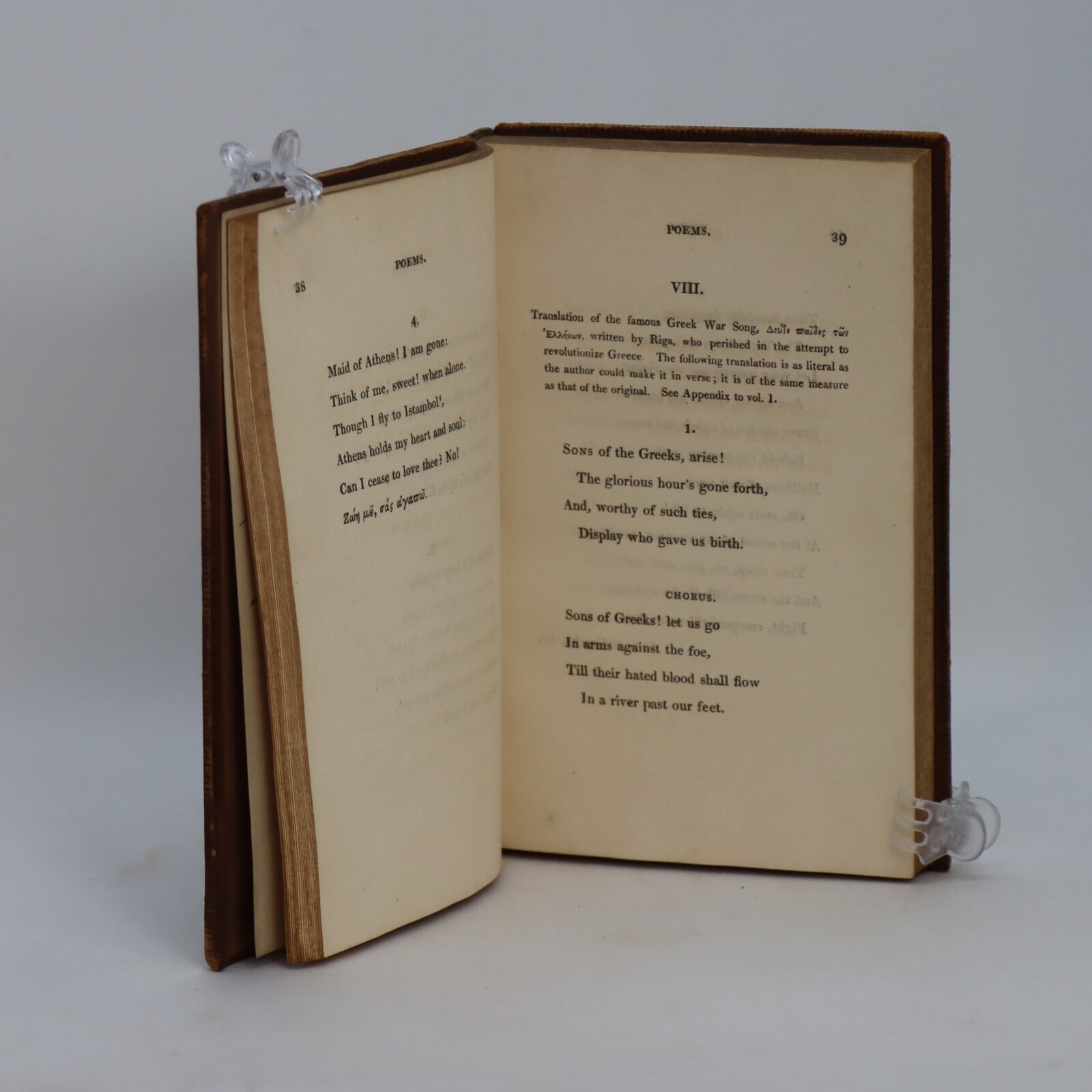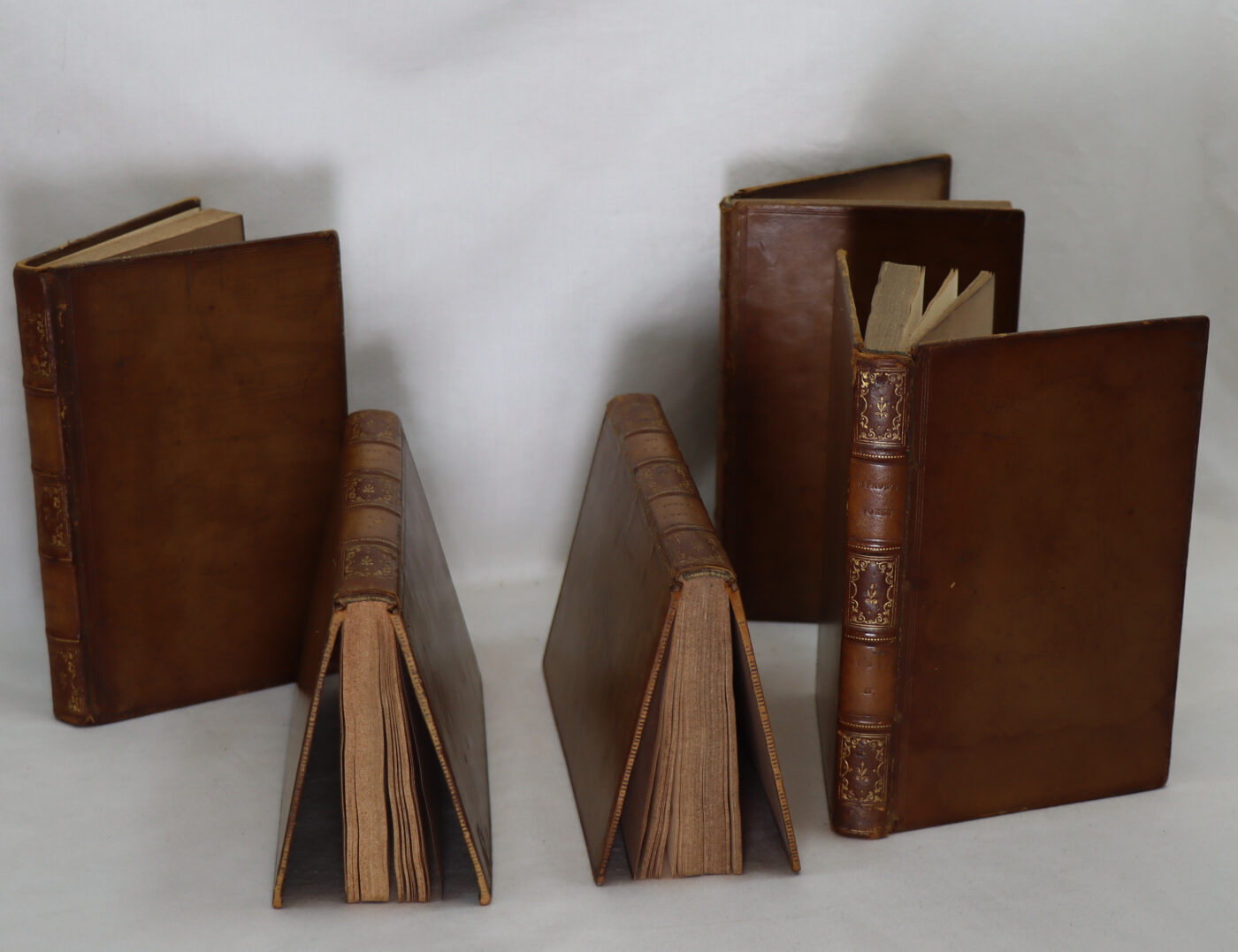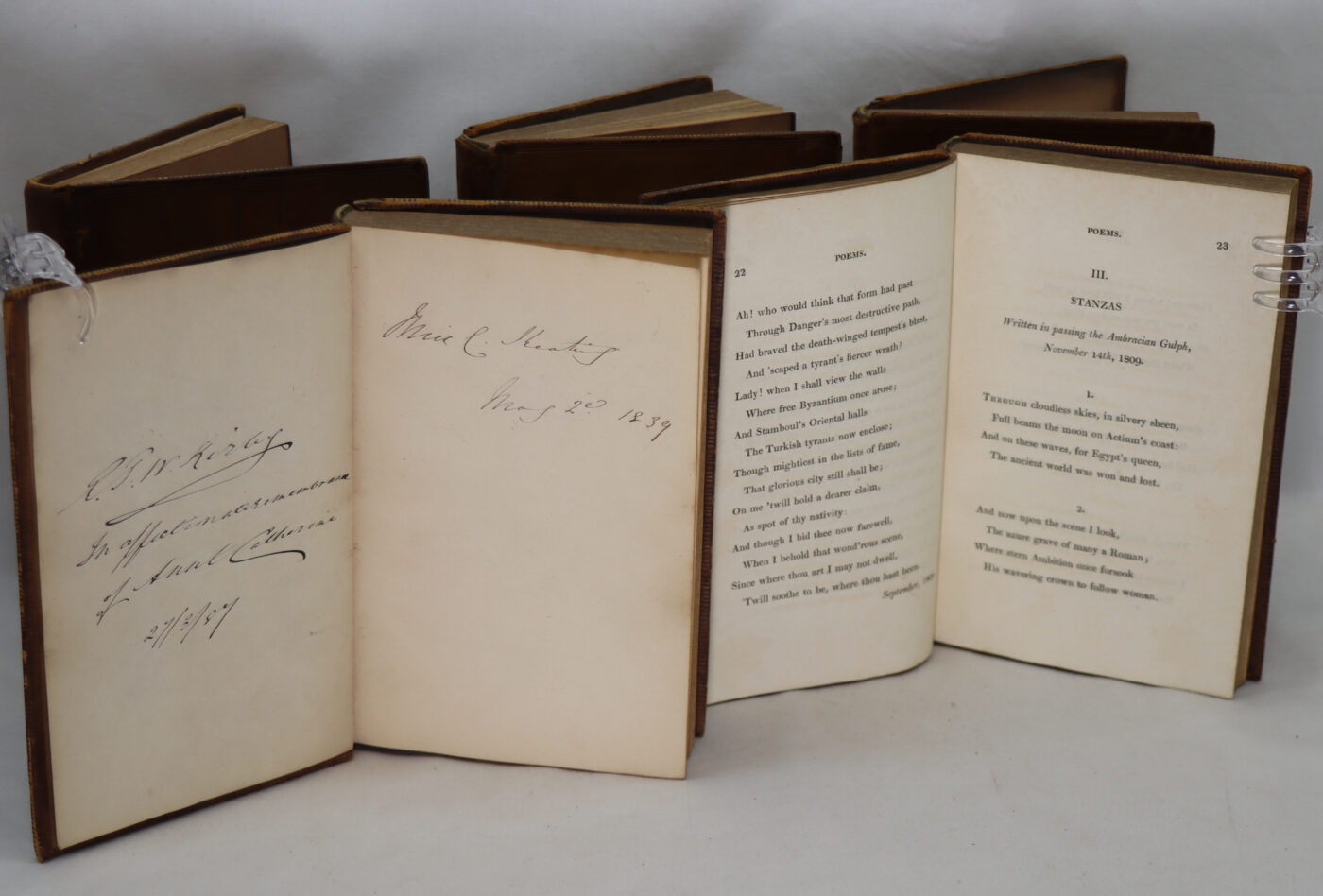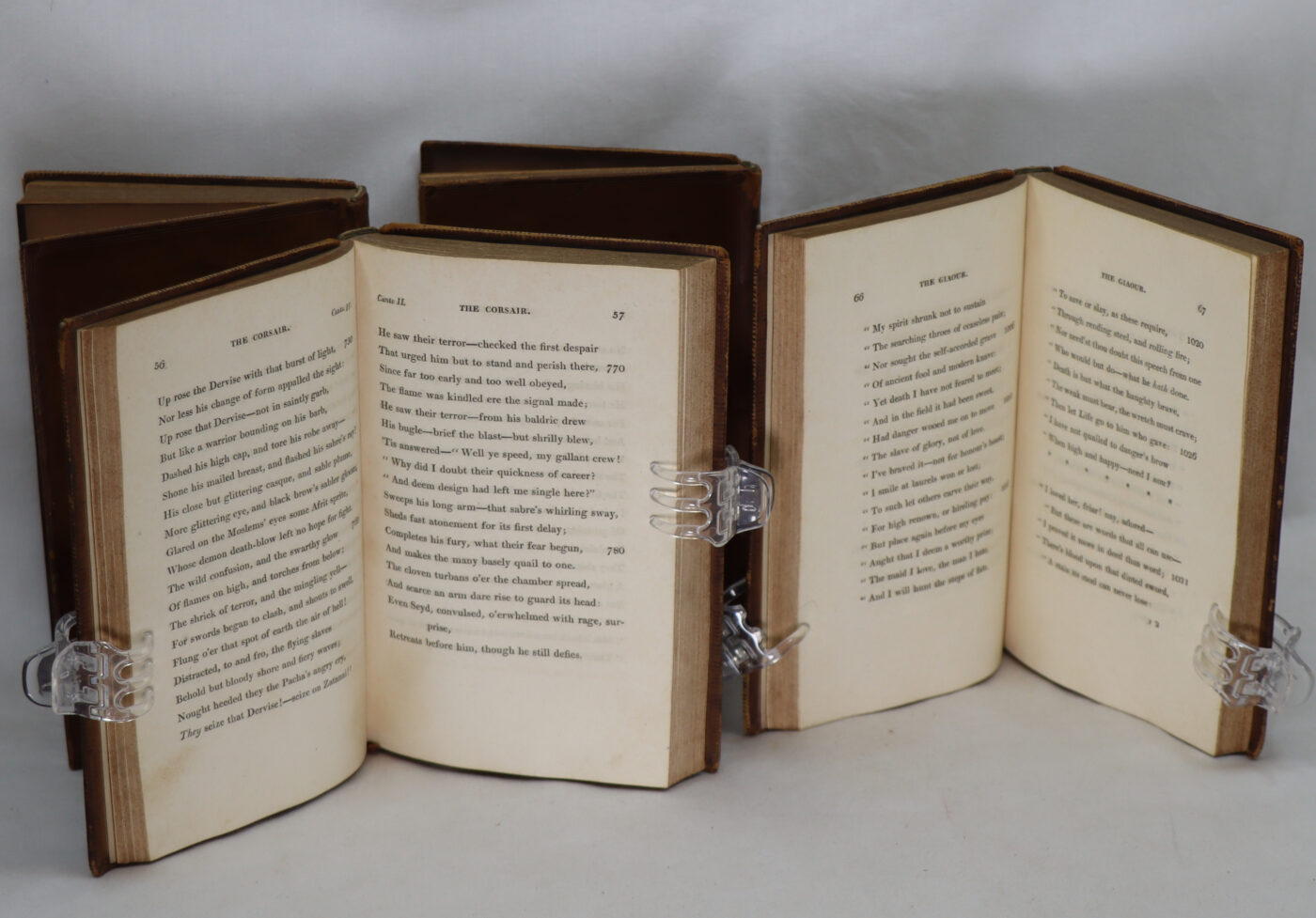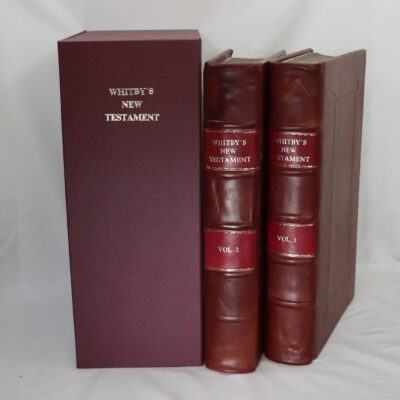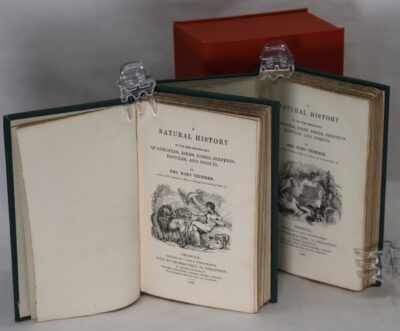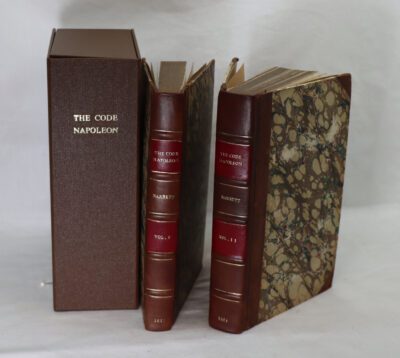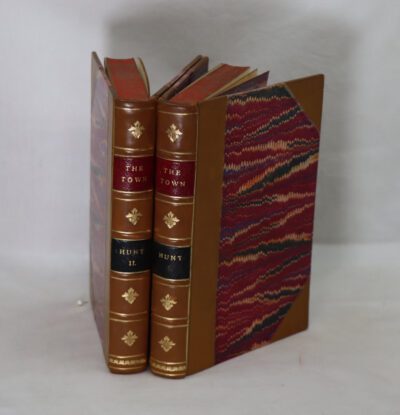Byron's Works. Five Volumes
By Lord Byron
Printed: 1817
Publisher: John Murray. London
| Dimensions | 11 × 16 × 2 cm |
|---|---|
| Language |
Language: English
Size (cminches): 11 x 16 x 2
Condition: Fine (See explanation of ratings)
FREE shipping
Item information
Description
Full tan calf bindings. Embossed gilt tooling on the spine. Embossed title and volume. Volumes I, II, II, IV and V. Dimensions are for one volume.
A premier edition printed in 1817 with interesting handwritten annotations.
FBA has a number of beautifully produced water colours produced by Lord Byron’s relatives
George Gordon Byron, 6th Baron Byron, FRS (22 January 1788 – 19 April 1824), simply known as Lord Byron, was an English poet and peer. One of the leading figures of the Romantic movement, Byron is regarded as one of the greatest English poets. He remains widely read and influential. Among his best-known works are the lengthy narrative poems Don Juan and Childe Harold’s Pilgrimage; many of his shorter lyrics in Hebrew Melodies also became popular.
He travelled extensively across Europe, especially in Italy, where he lived for seven years in the cities of Venice, Ravenna, and Pisa. During his stay in Italy, he frequently visited his friend and fellow poet Percy Bysshe Shelley. Later in life Byron joined the Greek War of Independence fighting the Ottoman Empire and died leading a campaign during that war, for which Greeks revere him as a folk hero. He died in 1824 at the age of 36 from a fever contracted after the First and Second Siege of Missolonghi.
His only marital child, Ada Lovelace, is regarded as a foundational figure in the field of computer programming based on her notes for Charles Babbage’s Analytical Engine. Byron’s extramarital children include Allegra Byron, who died in childhood, and possibly Elizabeth Medora Leigh, daughter of his half-sister Augusta Leigh.
Byron is considered to be the first modern-style celebrity. His image as the personification of the Byronic hero fascinated the public, and his wife Annabella coined the term “Byromania” to refer to the commotion surrounding him. His self-awareness and personal promotion are seen as a beginning to what would become the modern rock star; he would instruct artists painting portraits of him not to paint him with pen or book in hand, but as a “man of action.” While Byron first welcomed fame, he later turned from it by going into voluntary exile from Britain.
Biographies were distorted by the burning of Byron’s memoir in the offices of his publisher, John Murray, a month after his death and the suppression of details of Byron’s bisexuality by subsequent heads of the firm (which held the richest Byron archive). As late as the 1950s, scholar Leslie Marchand was expressly forbidden by the Murray company to reveal details of Byron’s same-sex passions.
The re-founding of the Byron Society in 1971 reflected the fascination that many people had with Byron and his work. This society became very active, publishing an annual journal. Thirty-six Byron Societies function throughout the world, and an International Conference takes place annually.
Byron exercised a marked influence on Continental literature and art, and his reputation as a poet is higher in many European countries than in Britain, or America, although not as high as in his time, when he was widely thought to be the greatest poet in the world. Byron’s writings also inspired many composers. Over forty operas have been based on his works, in addition to three operas about Byron himself (including Virgil Thomson’s Lord Byron). His poetry was set to music by many Romantic composers, including Beethoven, Schubert, Rossini, Mendelssohn, Schumann and Carl Loewe. Among his greatest admirers was Hector Berlioz, whose operas and Mémoires reveal Byron’s influence.
Condition notes
Want to know more about this item?
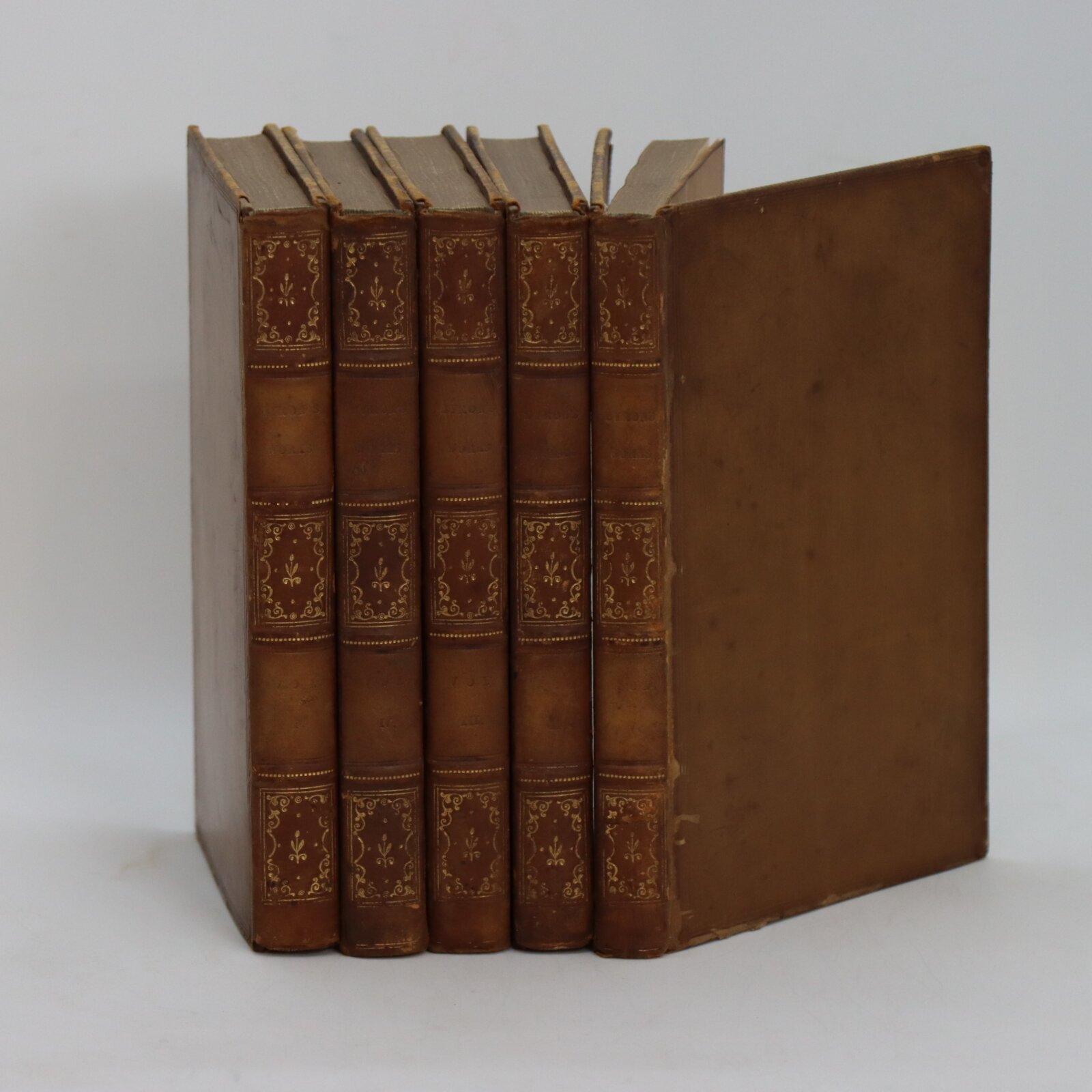
Related products
Share this Page with a friend

